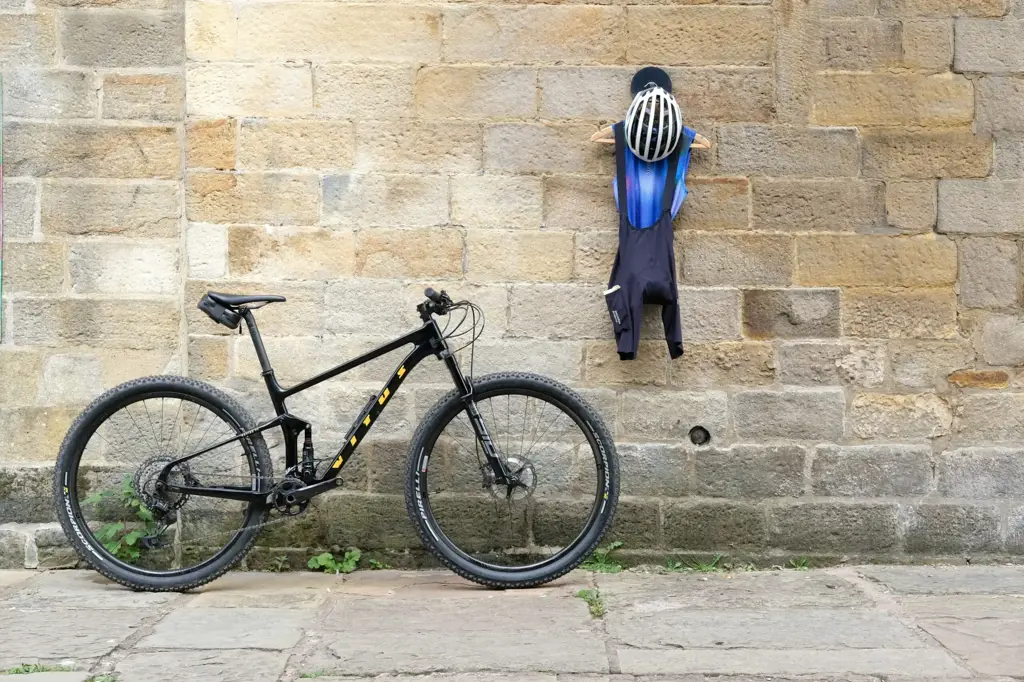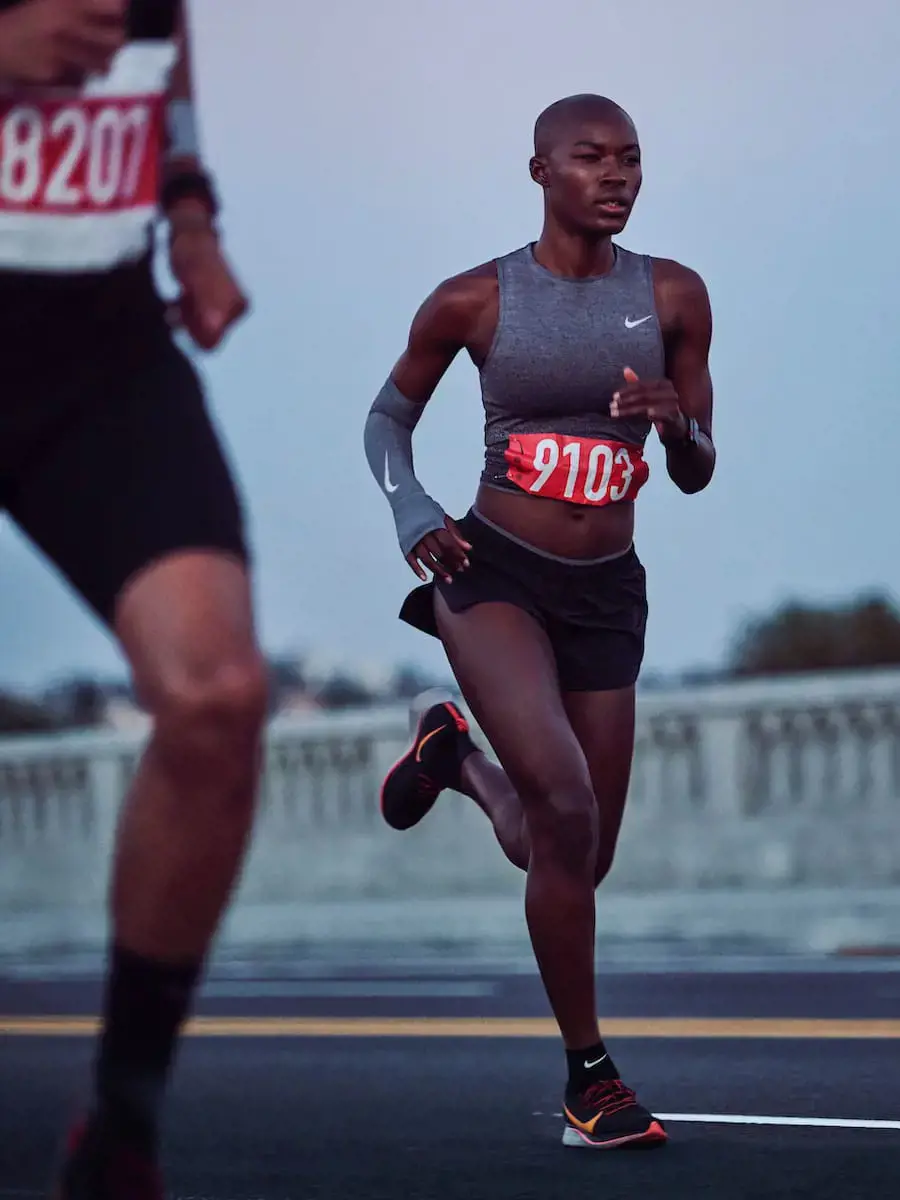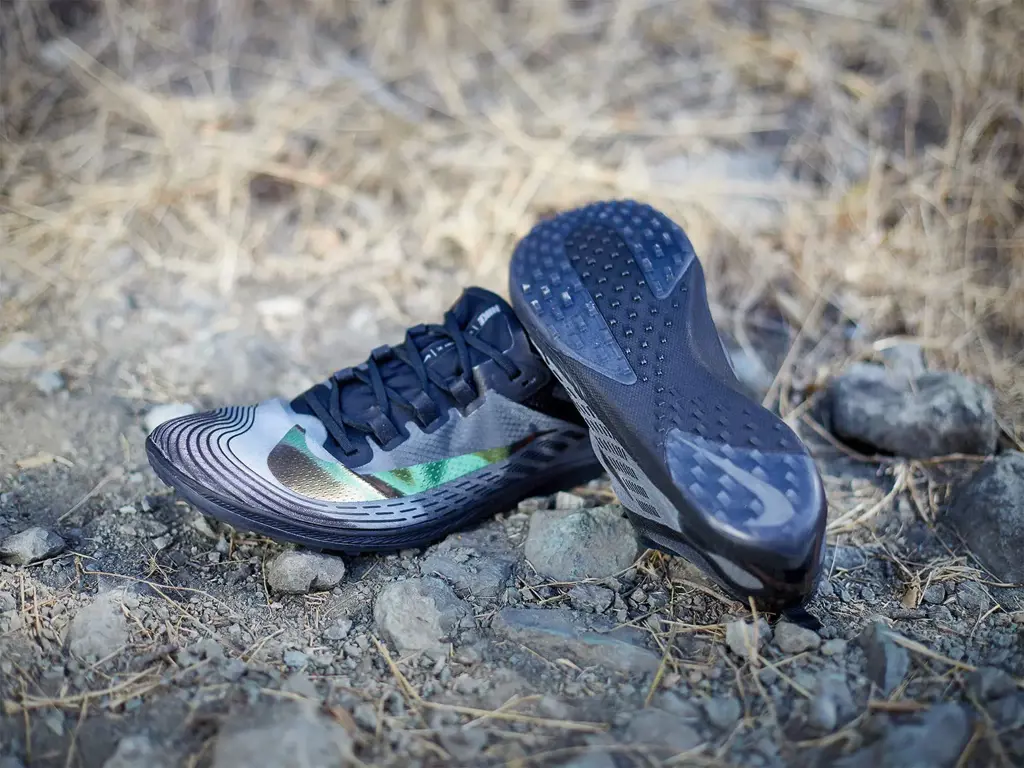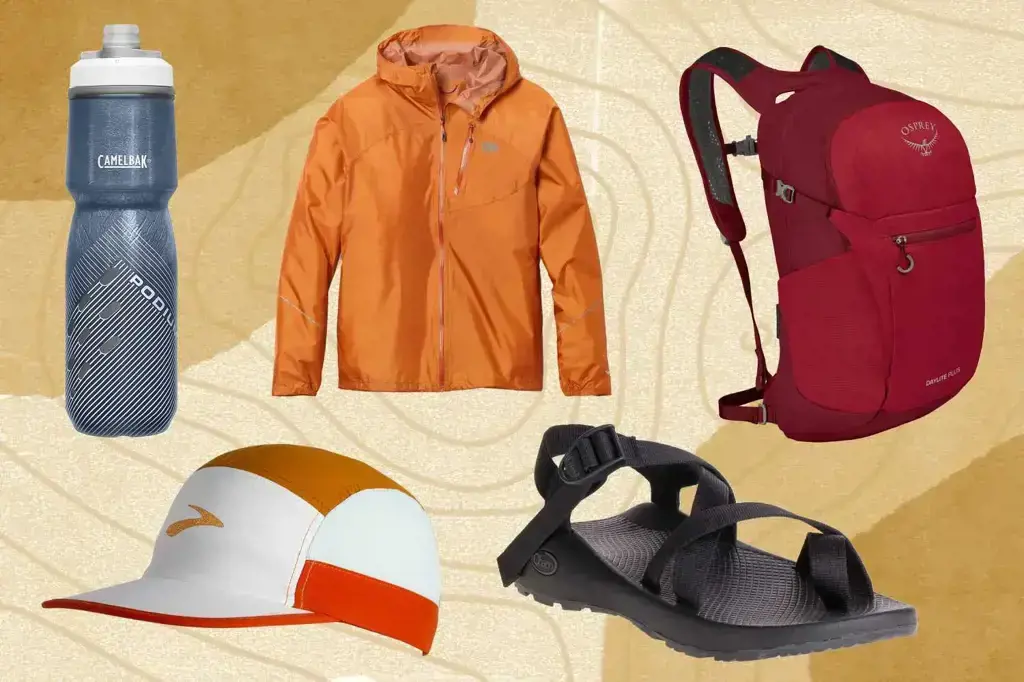
Packing for an upcoming Cross Country meet can seem like an overwhelming task. With so many things to consider, it can be easy to forget some essential items. However, fear not! In this article, we will provide you with some valuable tips and tricks to make sure you have everything you need for your upcoming meet. From clothing to accessories, we've got you covered. So get ready to pack like a pro and have a successful meet!
What You'll Learn
- What essential items should be packed for an XC meet?
- Are there any specific clothing items that are recommended for an XC meet?
- What kind of footwear is best suited for an XC meet?
- Are there any specific nutrition or hydration items that should be packed for an XC meet?
- Are there any other miscellaneous items that should be packed for an XC meet?

What essential items should be packed for an XC meet?

When it comes to preparing for a cross-country meet, it's important to pack a few essential items to ensure you have a successful and comfortable race day. Whether you're a seasoned runner or new to the sport, having the right gear and necessities can make all the difference in your performance. Here are some essential items that should be packed for an XC meet:
- Running Shoes: The most important item to pack for any XC meet is a pair of well-fitting and supportive running shoes. Ensure that your shoes are broken in and provide adequate cushioning and stability. Your shoes should have enough traction to grip the terrain, as cross-country courses can vary from grass to dirt to pavement.
- Running Clothes: Choose moisture-wicking and breathable clothing that will keep you comfortable throughout the race. Opt for lightweight and quick-drying materials that will help regulate your body temperature and prevent excessive sweating. Consider packing compression socks or calf sleeves to improve circulation and reduce muscle fatigue.
- Watch or GPS Device: Keeping track of your pace and distance can be crucial during a cross-country race. Pack a watch or GPS device to help you monitor your performance and stay on track with your strategy. This will help you pace yourself and adjust accordingly throughout the race.
- Hydration Pack or Water Bottle: Staying hydrated is essential for optimal performance, especially during longer races. Consider packing a hydration pack or a handheld water bottle to ensure you have access to water throughout the course. Look for hydration options that are comfortable to carry and easy to drink from on the go.
- Snacks and Energy Gels: Depending on the length of the race, you may need some quick energy boosts along the way. Pack energy gels or small snacks that are easy to digest and provide a source of carbohydrates. These can help replenish glycogen stores and keep you energized during the run.
- Sunscreen and Hat: Protecting your skin from the sun's harmful rays is crucial, especially if the race takes place during sunny conditions. Apply sunscreen before the race and consider packing a hat or visor to shield your face and eyes from the direct sun.
- Safety Pins: Don't forget to pack safety pins for attaching your race number to your shirt. These are often provided by race organizers, but it's always a good idea to have a few extras just in case.
- Extra Clothes and Towel: After the race, it's important to change into dry and comfortable clothes to prevent chafing and keep warm. Pack a fresh set of clothes, including a warm jacket or hoodie, as well as a towel to dry off and stay warm post-race.
Remember to check the weather forecast before packing for the meet to ensure you have appropriate clothing layers for any potential changes in temperature or weather conditions. It's also a good idea to have a checklist and double-check your packed items to avoid forgetting any crucial items on race day.
In conclusion, preparing for a cross-country meet involves packing essential items to enhance your performance and ensure your comfort. Remember to pack running shoes, appropriate clothing, a watch or GPS device, hydration options, energy boosts, sun protection, safety pins, and post-race essentials. By packing these items, you'll be ready to tackle the course with confidence and have a successful race day.
Essential Items to Pack for an Unforgettable Day at Epcot
You may want to see also

Are there any specific clothing items that are recommended for an XC meet?

When competing in a cross country (XC) meet, it is important to wear clothing that will provide comfort, support, and protection throughout the race. Here are some specific clothing items that are recommended for an XC meet:
- Running Shoes: A good pair of running shoes is essential for any runner, especially in a cross country race. Look for shoes that provide adequate support, cushioning, and a good grip on different terrains. It is important to break in your shoes before the race to avoid blisters and discomfort.
- Moisture-wicking Socks: Opt for moisture-wicking socks made from synthetic materials like polyester or nylon. These socks help to keep your feet dry and reduce the risk of blisters. Avoid cotton socks as they tend to absorb moisture, leading to discomfort and potential foot problems.
- Compression Shorts or Tights: Compression shorts or tights can provide additional support to your muscles and help improve blood circulation. They can also reduce muscle fatigue and soreness during and after the race. Look for compression gear made from breathable and moisture-wicking fabrics.
- Breathable and Lightweight Top: Choose a breathable and lightweight top made from moisture-wicking fabric to help regulate your body temperature. Avoid wearing cotton shirts as they can become heavy and uncomfortable when soaked in sweat. Look for materials like polyester or nylon that will keep you dry and comfortable throughout the race.
- Hat or Visor: A hat or visor can provide shade and protect your face from the sun. Look for a lightweight and breathable option that will not trap heat. Additionally, a hat or visor can help keep sweat out of your eyes, allowing for better visibility during the race.
- Sunglasses: If the XC meet takes place in bright sunlight, consider wearing sunglasses to protect your eyes from harmful UV rays and glare. Choose sunglasses with a comfortable fit and lenses that provide adequate protection without compromising your vision.
- Arm Sleeves: Arm sleeves can help keep your arms warm and protect them from scratches or irritation from branches or shrubs along the race course. Look for lightweight and breathable arm sleeves that won't restrict your movement.
- Extra Layers: Depending on the weather conditions, it may be beneficial to bring extra layers of clothing, such as a lightweight jacket or a long-sleeved shirt, to wear before and after the race. This will help keep your muscles warm and prevent unnecessary heat loss.
Remember, it is always important to dress in layers so that you can adjust your clothing as needed during the race. Also, consider the terrain and weather conditions of the specific XC meet you will be participating in. Being properly dressed will help you focus on your performance and achieve your best results in the race.
Essential Items to Pack for the Ever-Changing Weather in Phoenix
You may want to see also

What kind of footwear is best suited for an XC meet?

When it comes to participating in a cross-country (XC) meet, having the right footwear is crucial. XC races often involve running on a variety of terrains, including grass, gravel, dirt, and sometimes even mud. Therefore, the best footwear for an XC meet is one that provides adequate support, traction, durability, and comfort.
One important factor to consider when choosing XC shoes is the type of terrain you will be running on. If the course consists mostly of grassy surfaces, shoes with longer spikes or studs might offer better traction. These spikes help grip the ground and prevent slipping, especially on uneven or wet surfaces. On the other hand, if the course includes a mix of terrains, shoes with shorter spikes or a more versatile sole may be a better choice.
Another important feature to look for in XC footwear is support. XC races can be physically demanding, requiring constant changes in direction and impact on the feet. Look for shoes that offer a good balance of cushioning and stability, as this will help to reduce the risk of injuries such as ankle sprains. A shoe with a supportive midsole and a snug fit around the heel can help keep your feet stable and protected throughout the race.
Durability is also a crucial factor to consider. XC races can be demanding on shoes, with constant pounding on various surfaces. Look for shoes made from durable materials, such as reinforced overlays or rubber outsoles. These features will help your shoes withstand the rigors of the race and provide long-lasting performance.
Comfort is another important aspect when it comes to XC footwear. Running long distances in uncomfortable shoes can lead to blisters, discomfort and decrease your performance. Look for shoes that offer a comfortable fit, with enough room in the toe box to prevent your toes from rubbing against the shoe. Additionally, shoes with breathable materials and moisture-wicking properties can help keep your feet dry and comfortable throughout the race.
To illustrate the importance of choosing the right footwear for an XC meet, let's consider an example. Runner A decides to participate in an XC meet wearing regular running shoes, which do not offer the necessary traction or support for off-road running. As a result, Runner A struggles to maintain grip on the slippery grass surfaces and ends up slipping and falling multiple times during the race. In contrast, Runner B invests in a pair of XC shoes with longer spikes and a supportive midsole. With the appropriate footwear, Runner B is able to navigate the various terrains with ease, maintaining a steady pace and finishing the race without any accidents.
In conclusion, when it comes to participating in an XC meet, it is essential to choose the right footwear. Consider factors such as terrain, support, durability, and comfort when selecting XC shoes. By investing in the right pair of shoes, you can enhance your performance, reduce the risk of injuries, and have a more enjoyable race experience.
Essential Items for an Unforgettable Vacation to Alaska
You may want to see also

Are there any specific nutrition or hydration items that should be packed for an XC meet?

When it comes to participating in cross-country meets, nutrition and hydration play a crucial role in performance and overall well-being. As athletes push their bodies to the limits during races, it is important to fuel and replenish appropriately to ensure optimal performance and recovery. Packing the right nutrition and hydration items can make a significant difference in an athlete's performance and overall experience during a cross-country meet.
Here are some specific nutrition and hydration items that should be packed for an XC meet:
- Water bottle: Staying hydrated is key during a cross-country meet, as athletes can easily become dehydrated due to the physical demands of the sport. Packing a reusable water bottle is essential to ensure a constant supply of water throughout the day. Sipping water before, during, and after the race can help maintain optimal hydration levels and prevent cramps or fatigue.
- Sports drink: In addition to water, packing a sports drink can be beneficial during a cross-country meet. Sports drinks contain electrolytes such as sodium and potassium, which help replenish the body's fluids and electrolyte balance. These drinks can provide a quick source of energy and help prevent dehydration during prolonged physical activity.
- Energy gels or bars: Long-distance running requires a sustained source of energy. Energy gels or bars can be packed to provide a quick and easily digestible source of carbohydrates during the race. These products are designed to be consumed during activity and can help replenish glycogen stores, delay fatigue, and improve endurance.
- Fresh fruits and vegetables: Including fresh fruits and vegetables in the packed meal or snacks can provide essential vitamins, minerals, and antioxidants. These nutrients are important for overall health and can support optimal energy levels and recovery. Fruits like bananas and oranges are particularly beneficial due to their high potassium content, which can help prevent muscle cramps.
- Nut butter or cheese: Packing some nut butter or cheese can provide a good source of protein and healthy fats. These items can be paired with whole-grain crackers or bread for a balanced and portable snack. Protein is crucial for muscle repair and recovery, while healthy fats can provide sustained energy and satiety during the day.
- Pre-race meal: It is important to have a well-balanced meal before a cross-country meet. This meal should include a mix of carbohydrates, proteins, and healthy fats to provide sustained energy for the race. Whole grains, lean proteins, vegetables, and fruits are good choices for a pre-race meal. Avoiding heavy or greasy foods can help prevent gastrointestinal discomfort during the race.
- Post-race recovery snacks or drinks: After a race, it is important to replenish the body's fuel stores and promote muscle recovery. Packing a post-race recovery snack or drink can help jumpstart this process. Options such as chocolate milk, protein shakes, or a mixture of carbohydrates and protein can help refuel and repair the muscles.
Remember, every athlete is different, and it is important to experiment with different nutrition and hydration strategies during training to find what works best for you. It is also important to listen to your body and adjust your fueling and hydration plan accordingly. Consulting with a sports nutritionist can provide tailored advice and recommendations based on your specific needs and goals.
In conclusion, packing the right nutrition and hydration items for a cross-country meet is crucial for optimal performance and overall well-being. Staying hydrated, fueling with the right mix of carbohydrates, proteins, and healthy fats, and replenishing the body's fuel stores are key to success on race day. By packing water, sports drinks, energy gels or bars, fresh fruits and vegetables, nut butter or cheese, and a well-balanced pre-race meal, athletes can ensure they have the necessary fuel and nutrients to perform their best. Don't forget to pack a post-race recovery snack or drink to aid in muscle recovery and replenishment. Remember to listen to your body and adjust your fueling and hydration plan based on individual needs and goals.
The Ultimate Packing Guide for an All-Inclusive Resort Vacation in Cancun
You may want to see also

Are there any other miscellaneous items that should be packed for an XC meet?

When it comes to packing for an cross country (XC) meet, it's important to have all the essentials to ensure a successful and comfortable race day. From running gear to hydration and nutrition, there are a few miscellaneous items that should be packed to make the most out of the meet.
One of the most important miscellaneous items to pack for an XC meet is a small first aid kit. While it's unlikely that you'll need it, accidents can happen during a race, and having some basic supplies can be a lifesaver. Your first aid kit should include items such as adhesive bandages, antiseptic wipes, blister pads, and pain medication. It's always better to be prepared than to be caught off guard.
Another important item to pack is a foam roller or massage ball. Long hours of running can take a toll on your muscles, and using a foam roller or massage ball can help prevent muscle tightness and soreness. Make sure to spend some time before and after the race rolling out your muscles to keep them in top condition.
Additionally, it's a good idea to pack extra safety pins and a sharpie marker. Safety pins are commonly used to attach race bibs to your running gear, and it's always a good idea to have some spares in case you lose or break any. A sharpie marker can be handy for writing your name and team number on your gear or even for autographs if you're a fan of collecting mementos from other runners.
Other miscellaneous items to consider packing include a trash bag or plastic poncho in case of rain, spare hair ties or headbands, sunscreen, and extra socks. Weather conditions can be unpredictable, and it's always better to be prepared for any situation. Spare hair ties and headbands are always useful, as these small items tend to get lost easily. Sunscreen is essential for outdoor events, especially if the meet is held during sunny hours, as it can protect your skin from harmful UV rays. Lastly, packing extra socks can be a game-changer if your feet get wet during the race, as dry feet are less prone to blisters.
In conclusion, packing for an XC meet involves more than just your running gear. It's important to include miscellaneous items such as a first aid kit, foam roller or massage ball, extra safety pins and a sharpie marker, a trash bag or plastic poncho, spare hair ties or headbands, sunscreen, and extra socks. By being prepared with these items, you can ensure a successful and comfortable race day.
Essential Items to Pack for Your Ben Nevis Adventure
You may want to see also
Frequently asked questions
When packing for an XC meet, it's important to include a few essential items. First, make sure to pack your running shoes, socks, and any necessary orthotics or inserts. Additionally, bring along a few pairs of shorts or leggings, along with a moisture-wicking shirt or tank top. Don't forget to pack a sports bra or compression top for female runners. Lastly, bring a lightweight jacket or hoodie in case the weather takes a turn.
While not essential, there are a few accessories you might want to consider bringing to an XC meet. One such item is a hat or visor to protect your face from sun exposure. Sunglasses can also be helpful on particularly bright days. Additionally, you might want to bring a running watch or GPS tracker to keep track of your pace and distance. Some runners also find it helpful to bring a foam roller or massage ball to help with post-race recovery.
Along with the essentials and potential accessories, there are a few other items you may want to include in your XC meet packing list. Don't forget to bring a water bottle or hydration pack to stay hydrated throughout the race. It's also a good idea to pack some snacks, such as energy bars or fruit, for quick fuel before or after the race. Additionally, bring any necessary medications or personal care items, such as sunscreen or lip balm.
When packing for an XC meet, it's important to be organized and efficient. Consider using a gym bag or backpack to store all your items. Pack your shoes and socks in a separate compartment or plastic bag to keep them clean and odor-free. Roll up your clothing items to save space and prevent wrinkles. Keep any accessories or smaller items in a separate pouch or pocket for easy access. Lastly, label your bag with your name and contact information in case it gets misplaced.







